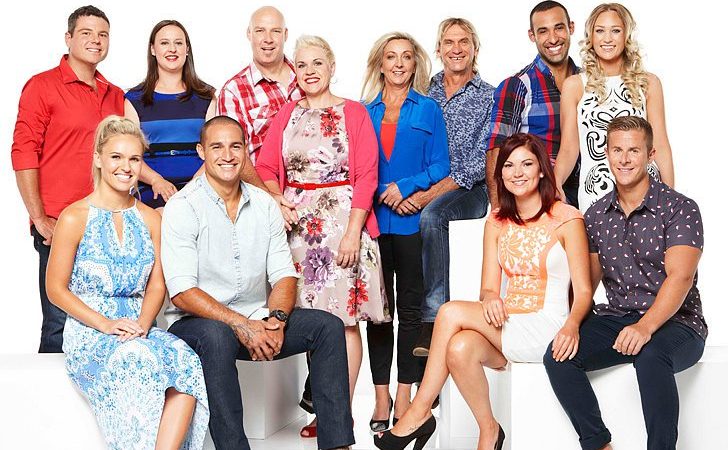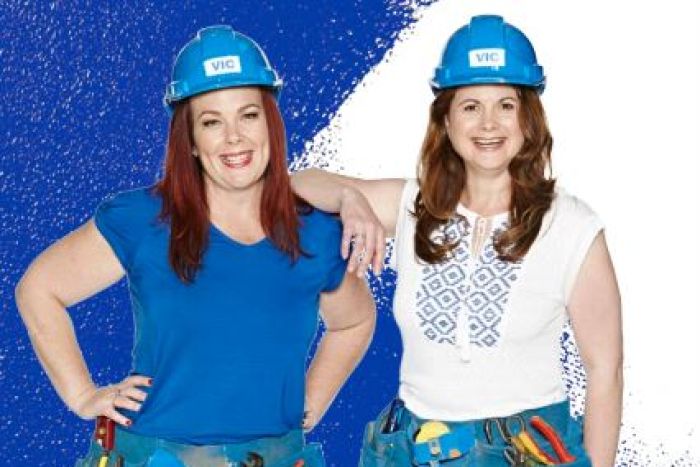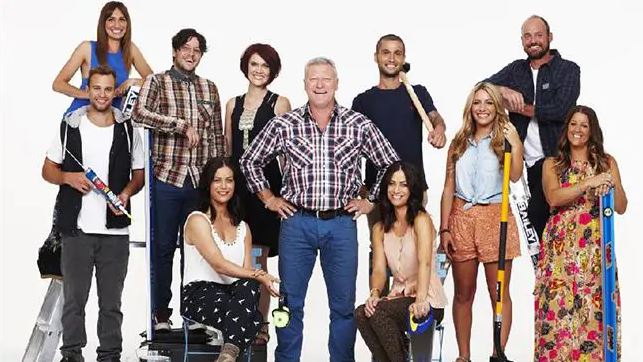A reality TV show in Australia, House Rules is broadcast on the Seven Network. The concept of the show is to follow a few teams from different states that renovate each other’s homes.
The renovations are given scores, and the couple/team that gets the highest score ultimately wins the prize. The same team who brought My Kitchen Rules to the Seven Network produces House Rules.
House Rules number of seasons
So far, seven seasons of House Rules have aired. The first season aired in 2013 with the latest eighth season expected to air in 2020.
- The first season started airing on 14 May 2013 and ended on 31 July 2013. The winners were Leighton Brow and Carly Schulz who are from South Australia. They received a full mortgage payment worth $460,000.
- The second season started airing on 30 April 2014 and ended on 6 July 2014. The winners were Lisa Lamond and Adam Dovile from Victoria. They received a full mortgage payment worth $520,000.
- The third season started airing on 5 May 2015 and ended on 20 July 2015. The winners were Steve and Tiana Falzon from NSW. They received a full mortgage payment worth $250,000.
- The fourth season started airing on 27 April 2016 and ended on 3 July 2016. The winners were Luke and Cody Cook who are from Queensland. They received a full mortgage payment worth $120,000.
- The fifth season started airing on 30 April 2017 and ended on 9 July 2017. The winners were Aaron and Daniella Winter who are also from Queensland. They received $200,000 in prize money.
- The sixth season started airing on 7 May 2018 and ended on 30 July 2018. The winners were Toad Heffernan and Mandy Stone who are from NSW. They received $355,000 in prize money.
- The seventh season started airing on 28 April 2019 and ended on 23 July 2019. The winners were Pete Tserbis and Courtney Reardon from Victoria. They received $250,000 in prize money.

House Rules renovation phases
During seasons 1 to 5, these were the phases followed for House Rules:
- Interior renovation – the six teams travel around the country to renovate each other’s homes. This takes place over a few weeks and each team is given a set of rules by the owners, which need to be followed to get a high score. One team is eliminated after this phase.
- 24-hour fix up – The remaining teams head back to their homes and redo one of the zones within 24 hours. They need to redo the space to reflect their own styles. All teams receive the same set of rules. Scores are then given and added to the total. The team with the lowest score is eliminated.
- Gardens and exterior spaces – The remaining 4 teams must transform the exteriors of their competitor’s homes. At the end, the team scoring the lowest is eliminated.
- Charity house – The top three teams are given the task of renovating an old charity house. They are given the same set of rules where each team has a specific zone, picked through a draw. The two highest scoring teams will go through to the finale.
- Finale – the top two teams complete one challenge in the home of their competitor where they have to renovate an additional room. The public gets to vote for their favourite team. The winner is a combination of the score from the judges and viewer votes. The team with the best score wins.
During Season 6 and 7, there was a slight change in the renovation phases although the basic concept of the show remained unchanged:
- In the Season 6 finale, the top two teams had to renovate the front yard of their competitor. The judges determined the winning team – based on the scores they received.
- In the Season 7 finale, the top three teams were challenged with renovating a 17-room apartment. Each team randomly chose a zone. Once completed, they were given a score. The team who scored the highest was the winner of the series.

Format changes for prize money during the House Rules seasons
- In the first four seasons, the winners would have their mortgage paid off as the ultimate prize.
- In the fifth season, the winning contestants won the ultimate prize of $200,000.
- In the sixth season, the prize was determined in the first challenge where the contestants had to renovate a chosen house. This house was then sold at an auction. The money made from the auction – a total of $355,000 – was decided as the prize for the season.
- In the seventh season, the winning contestants would win $250,000.
For the first four seasons, the Grand Final was live with the winners decided through both – votes from viewers and judge scores. From the fifth season, there are no grand finals, so the team getting the highest judge points won.

Hosts, experts and judges on House Rules
- Carolyn Burn-McCrave has served as the design advisor from season 1 onwards and continues to do so.
- Chester Drife was the build supervisor in the first two seasons.
- Wendy Moore served as a judge on the show from Season 1 through to Season 7
- In season 2, garden rounds judge – Jim Fogarty – did not return. Joe Snell and Wendy Moore, who judged the garden rounds, replaced him.
- Joe Snell served as a judge from Season 1 to Season 4 and did not return after.
- From season 5 onwards, Laurence Llewelyn-Bowen and Drew Heath came on board with Wendy Moore as judges for the show.
- Drew Heath was replaced by Jamie Durie as a new judge in Season 7.
- Johanna Griggs served as the host on the show from Season 1 through to Season 7.
- Jamie Durie will host the show with Abbey Gelmi as the co-host in the eighth season.
- Kyly Clarke and Saul Myers will serve as judges on the show in the eighth season.

Viewership during House Rules seasons
- The first season of House Rules began with 803,000 viewers. During the season, the number of viewers grew significantly to a high of 1.53 million viewers during the finale and 1.83 million while the winner was announced.
- The second season had 1.18 million viewers during the premiere. This was the highest rated show of that night. The finale had 1.73 million viewers and 1.98 million viewers while the winner was being announced.
- The third season had 791,000 viewers. The finale had 1.09 million viewers and 1.29 million watching the announcement of the winner.
- During the fourth season, 718,000 viewers tuned in to watch the premiere. The finale was watched by 1.14 million viewers and 1.19 million viewers watched the announcement of the winner.
- During the fifth season, 1 million viewers tuned in to watch the premiere. This was nearly 300,000 more than the year before and was the second highest opening after Season 2. There were 1.01 million viewers during the finale with 1.14 million viewers watching the winner announcement.
- The sixth season had 607,000 viewers, which was the lowest premiere rating across all seasons. The finale had just 853,000 viewers with 915,000 tuning in to watch the announcement of the winner.
- The seventh season had 782,000 viewers during the premiere, which was better than the previous season. The finale had just 644,000 viewers while 730,000 tuned in to watch the announcement of the winner.

Compensation for former House Rules Season 7 contestant
A former contestant of the show, Nicole Prince, filed a compensation lawsuit against the Channel for psychological injuries she went through on the show.
- The New South Wales Compensation Commission found she was in all legality, an employee, of the channel during filming in 2017.
- The commission ordered that Prince be paid for the harassment and bullying she went through during the show.
- She claimed that she had been bullied and isolated throughout filming and received threats of abuse as the producers portrayed her as a ‘bully’ herself on the show.
- She claimed that she and friend, Fiona Taylor, were instructed to be more critical of other contestants and were subsequently bullied by the others.
- She filed a worker’s compensation claim after the filming of the show, claiming she had anxiety disorder, adjustment disorder and depression.
- The network denied liability claiming she was not a worker.
- Prince along with Taylor was paid $500 every week along with an additional allowance of $500. Even though they were given this allowance, they were still provided with meals and accommodation while on the show.
- The ruling found that Price was an employee of Channel Seven and compensation for hospital and medical treatment was to be paid by the network.
Despite its viewership changes over the years, House Rules remains a popular reality show for the Seven Network with calls for new applications for the next season.

